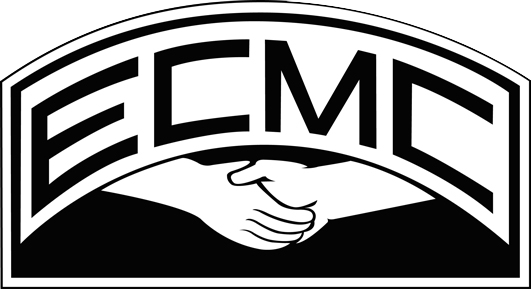About & History
The ECMC was founded in 1974 and it was part of the wider process of linking and networking which took place among European and USA leather clubs at the end of the sixties.
The leather community and culture started in the USA at the beginning of the fifties. In 1951 Shaw’s – the first known leather bar – opened in New York City. In the following years many bars opened all around the USA. The first European leather bar the Argos opened in Amsterdam in 1957.
The need for some kind of association for the regular gay visitors to these clubs soon rose up. The goal of these associations was to share interests (leather and biker related) outside of commercial places. Thus, the first clubs and associations were founded, typically as motorcycle clubs in order to bypass laws against homosexuality. The first gay motorcycle club the Satyr MC was founded in 1954 in Los Angeles. After that new clubs were founded in San Francisco in 1960, Chicago in 1963 and New York City in 1968.
The first European Leather Club the Sixty Nine Club was founded in 1965 in London. After that came Senses in UK in 1969, MS Amsterdam and MSC Rhein-Main Frankfurt in 1970, Loge 70 in Switzerland in 1973, MSC London in 1973 and MS Belgica in Bruxelles before 1974.
The increase in the number of leather clubs necessitated a degree of coordination among the clubs themselves. In those years train traveling was difficult and air traveling was both difficult and expensive. International communication was made by post or expensive telephone calls. Last but not least, homosexuality was illegal and/or seen as a clinical mental disorder in many countries. Leather and biker gays felt it was vital to establish links with other leather men and between clubs to create a wider community, to promote the gay leather/biker culture and lifestyle, and better respond to external threats.
In 1969 April 4th the AMCC (Atlantic Mid-West Coordinating Council, later Atlantic Motorcycle Coordinating Council) was founded. It was the first association of leather and biker clubs. It was founded by nine clubs of which one was from Europe and rest from USA. The clubs were The Spartan MC and The SMCLA Lost Angels from Washington, The Cycle MC and The Empire City MC from New York City, The Vikings MC from Boston, The Second City MC from Chicago, The Rocky Mountaineers MC from Denver and The Sixty Nine Club from London.
Within a few years, the number of clubs had increased so much that it was decided to divide AMCC into three parts: The Mid-America Conference, The Atlantic Motorcycle Coordinating Council, and The European Confederation of Motorcycle Clubs (ECMC).
On 1974, 14th January, Sixty Nine Club invited the leather clubs of Europe to London. This was to be the constitutive meeting of the ECMC. John Willis from The Sixty Nine club was elected to be the first secretary. He also designed our logo. It was also agreed that an annual general meeting should be hosted by a different club every year. The ECMC was established to distribute information between its member clubs. The ECMC would act as a secretariat and as an information centre for all affiliated clubs. Secretary’s main task was to look over that there were no overlaps in the scheduling of international events. During the 1975 AGM in Copenhagen on September 20th the ECMC’s first constitution was approved.
The first two AGMs laid the foundation for the whole future work of the ECMC. The coordination role of the ECMC was defined, and it was agreed the Secretariat should be held by a club for a two-year period. The minimum requirements for membership were also agreed: a club was to have at least fifteen members, hold at least one annual meeting, and be non-profit organisation.
Over the following years, many important questions would be debated inside ECMC: the role of women inside clubs and the ECMC, safe sex and the fight against AIDS; the role of the Secretary, the fight for gay rights, the matter of privacy, and so on. As the gay rights are marching forward it is often the rights for the vanilla majority. Gay subcultures such as fetish associations are often neglected. The role of ECMC in the contemporary Europe is as vital as ever.
The ECMC has grown over the years to include not just leather clubs but other gay European fetish clubs.
